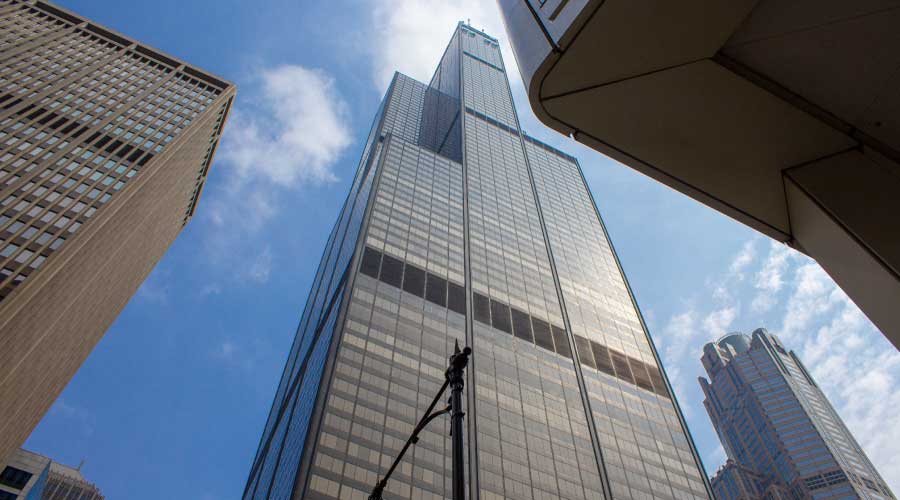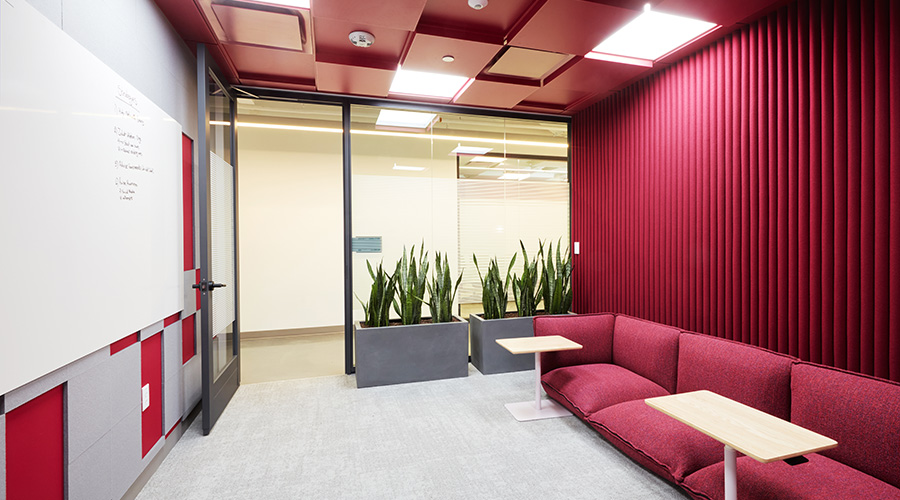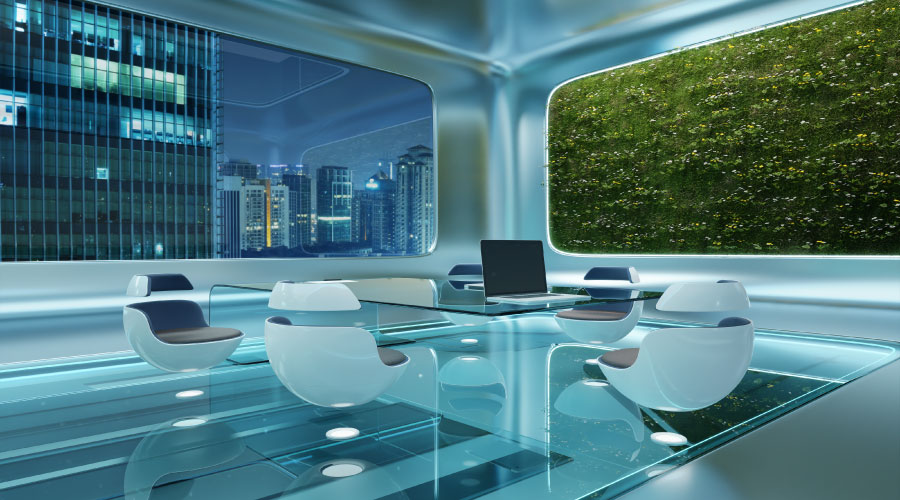Chicago's Willis Tower's $500 Million Upgrade Includes HVAC Work
Whatever the energy source, using hydronic heat brought a host of benefits to the Willis Tower.
Whatever the energy source, using the hydronic system brought a host of benefits to the Willis Tower and can do the same for other commercial buildings that use it, Everhart adds.
HVAC systems account for nearly half of the energy used in commercial buildings and are among the top five sources of greenhouse gas emissions, according to the U.S. Environmental Protection Agency. Knowing this, a transition to eco-friendly heating and cooling systems in all commercial buildings makes sense.
“When looking for better ways to heat large commercial buildings, hydronic heat presents a great opportunity,” the Xylem whitepaper maintains.
The whitepaper explains that hydronic heat is the HVAC technology of the future because it enables engineers, architects, and building owners to adapt to changing demands.
“Hydronic systems operate on a closed loop, meaning the same water is constantly being recirculated and heated or cooled again” the whitepaper reads. “This makes it an extremely efficient water conservation strategy because it reuses water and typically lasts the same lifetime as the unit.”
Water transports heat throughout a building via an insulated pipe which doesn’t experience a lot of heat loss, Everhart says. In contrast, a ducted air system attempting to transport hot air will lose heat by the time it reaches its destination.
“Water systems also have a lot of flexibility because you can adjust the temperature of the water accurately,” he says. “If you need two gallons of 140-degree water per minute, you can deliver that. If you need 200 gallons of 200-degree water per minute, you can do that too. The variable speed drives are so precise that you can adjust the speed of the pumps, so they don’t create or provide any more energy than is required.”
Windy City temps can range from minus-20 degrees Fahrenheit in January to 100 degrees in August.
“On a frigid day when the wind is blowing 60 miles per hour, every area of the building can have very different heating requirements,” Everhart says. “The sunny side of the building will need less heat than areas in the shade. Hydronics allow you to deliver specific capacities to each area.”
A hydronic system also made it easy to heat the building as the renovation changed or added new spaces, according to Everhart.
The Bell & Gossett coil pumps, the tenant pumps, pull heated water off the main system, so the central plants make chilled water for cooling and boiled water for heating, then distributed the heated or cooled water to a specific area.
“The capacities to each area sometimes changed a little bit, but it was a relatively easy change to make because they were using hydronics systems,” Everhart says. “When things are simple, that usually means they’re relatively less expensive and time consuming.”
The system allows every tenant to control the heat in their area. So, the tower’s Starbucks can heat and cool its retail space during business hours, while a condo owner can turn their heat down when they are at work.
“Everyone has their own control system to heat their areas to their needs,” he says.
Minimal Maintenance
Another key advantage of hydronic heat is the minimal maintenance required and the equipment’s long service life, Everhart says. The main building pumps will last up to 50 years, while the tenant pumps might last up to 30 years.
In most cases, the only maintenance needed is to make sure the bearings are lubricated, and the pumps remain online.
“These systems usually only need preventive maintenance,” he says. “The pumps in tenant spaces are mostly maintenance-free. You don’t have to oil them or service them. There’s very little you have to do.”
He adds these expectancies are tied to water maintenance. Poor water quality can lead to scaling, decreased efficiency, leaks, or worse. Achieving the right water quality helps ensure the system’s longevity and performance.
“As long as the water is maintained to a decent standard, you should not need to replace mechanical seals for several years,” he says.
Heating and cooling a building as tall and as big as the Willis Tower is no small feat. But the project’s push toward greater sustainability and highly efficient hydronic systems will significantly reduce operating costs and meet the building’s needs for years to come.
Ronnie Wendt is a freelance writer based in Minocqua, Wisconsin.
This article will be published in the May issue of Building Operating Management. The original article incorrectly called the product a hydraulic system instead of hydronic, and included other technical errors. The primary source for the information in this article was Dave Everhart, president of Bornquist, Inc., a Bell & Gossett representative for the Chicago area. The correct information has been updated in both this online article and the May digital edition of Building Operating Management.
Related Topics:













